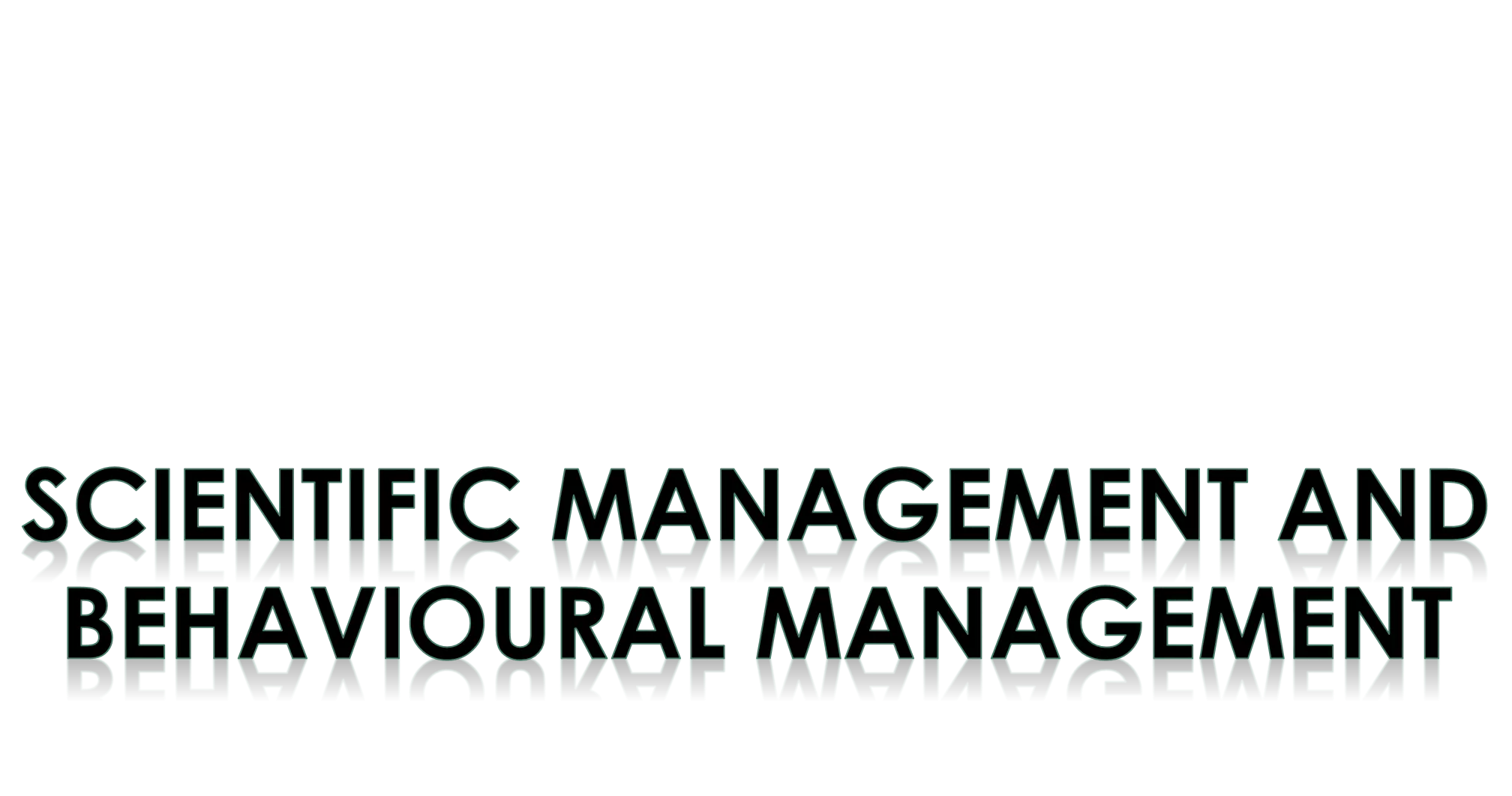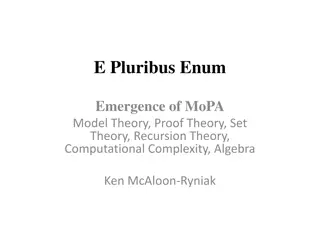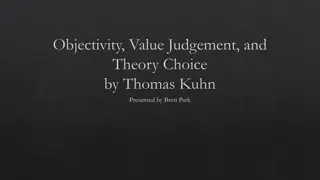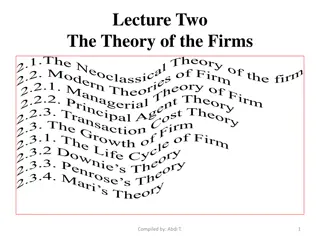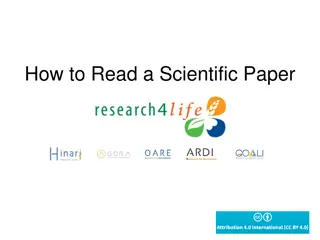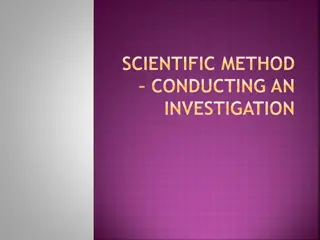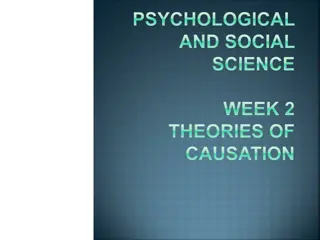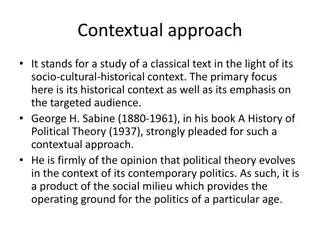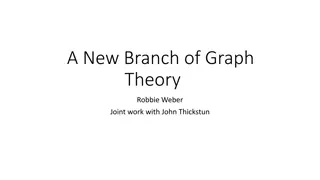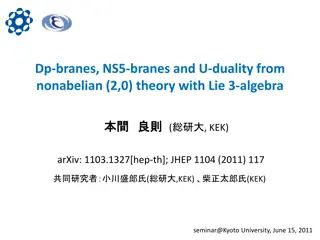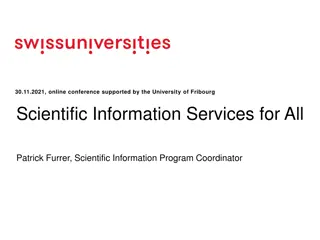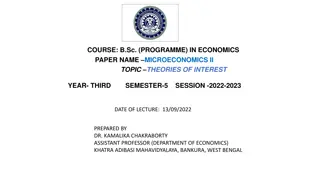Overview of Scientific Management Theory and Its Scope
Scientific management, also known as Taylorism, focuses on time and motion studies to improve work efficiency. It has influenced various industrial practices globally and emphasizes quantitative analysis for better management strategies. The theory is applicable in different institutions, enhancing productivity through systematic approaches developed by pioneers like Frederick Taylor and Frank and Lillian Gilbreth.
Download Presentation

Please find below an Image/Link to download the presentation.
The content on the website is provided AS IS for your information and personal use only. It may not be sold, licensed, or shared on other websites without obtaining consent from the author.If you encounter any issues during the download, it is possible that the publisher has removed the file from their server.
You are allowed to download the files provided on this website for personal or commercial use, subject to the condition that they are used lawfully. All files are the property of their respective owners.
The content on the website is provided AS IS for your information and personal use only. It may not be sold, licensed, or shared on other websites without obtaining consent from the author.
E N D
Presentation Transcript
SCIENTIFIC MANAGEMENT AND BEHAVIOURAL MANAGEMENT PRESENTED BY: M.RIZWAN 14-MS-EM-FT-07 PRESENTED TO: PROF DR MUKHTAR HUSSAIN SAHIR
SCIENTIFIC MANAGEMENT Scientific management is often referred to as Taylorism, as it was created by FW Taylor in the early 20th century. The basic principle is the use of time and motion and efficiency studies to determine how fast a job can be done and monitor how fast and well the workers are doing it. The scientific management model was developed to meet the needs that were persistent in the typical work place in the late 19th century
SCOPE OF SCIENTIFIC MANAGEMENT Scientific management theory is important because its approach to management is found in almost every industrial business operation across the world. Its influence is also felt in general business practices such planning, process design, quality control, cost accounting, and ergonomics. Your knowledge of the theory will give you a better understanding of industrial management. You'll also understand how a manager can use quantitative analysis, an examination of numbers and other measurable data, in management to improve the efficiency and effectiveness of business operations Now- a-days, principles of scientific management can be applied to all types of institutions, where men and materials are to be managed efficiently. The techniques of scientific management can be usefully employed by all economic and social organizations
SCIENTIFIC MANAGEMENT VIEWS Fredrick Taylor Views Frank and Lillian Gilbrith
Fredrick Taylor views Scientific management, or Taylors, is a management theory that analyzes work flows to improve economic efficiency, especially labor productivity. This management theory, developed by Frederick Winslow Taylor, was popular in the 1880s and 1890s in manufacturing industries Scientific management theory can be summarized by Taylor's Four Principles: Managers should gather information, analyze it, and reduce it to rules, laws, or mathematical formulas. Managers should scientifically select and train workers. Managers should ensure that the techniques developed by science are used by the workers. Managers should apply the work equally between workers and themselves, where managers apply scientific management theories to planning and the workers perform the tasks pursuant to the plans
Frank and Lillian Gilbrith While Taylor was conducting his time studies, Frank and Lillian Gilbreth were completing their own work in motion studies to further scientific management. The Gilbreths made use of scientific insight to develop a study method based on the analysis of work motions, consisting in part of filming the details of a worker's activities while recording the time it took to complete those activities Use of motion pictures to study human and body movement Time and motion study human implications of scientific management Focused on increasing worker productivity through the reduction of wasted motion Developed the micro chronometer to time motions and optimize performance
SCIENTIFIC MANAGEMENT LIMITATION This emphasis on productivity and, by extension, profitability led some managers to exploit both workers and customers. This condition created mistrust / suspicious relationship between labor and supervisor or management
SCIENTIFIC MANAGEMENT APPLICATIONS Taylor scientific management is not hard to recognize within the modern day workplace .The areas in which scientific management applied are given below Manufacturing Plants Hospitals Restaurants Service sectors
BEHAVIOURAL MANAGEMENT The behavioral approach involves analyzing workers' patterns of behavior to try and establish which actions are the most efficient. The behavioral management theory is often called the human relations movement because it addresses the human dimension of work. Behavioral theorists believed that a better understanding of human behavior at work, such as motivation, conflict, expectations, and group dynamics, improved productivity
BEHAVIOURAL MANAGEMENT VIEWS S Elton Mayo's contributions came as part of the Hawthorne studies, a series of experiments that rigorously applied classical management theory only to reveal its shortcomings. The Hawthorne experiments consisted of two studies conducted at the Hawthorne Works of the Western Electric Company in Chicago from 1924 to 1932. The first study was conducted by a group of engineers seeking to determine the relationship of lighting levels to worker productivity. Surprisingly enough, they discovered that worker productivity increased as the lighting levels decreased that is, until the employees were unable to see what they were doing, after which performance naturally declined
ABRAHAM MASLOWS VIEWS A practicing psychologist, developed one of the most widely recognized need theories, a theory of motivation based upon a consideration of human needs. His theory of human needs had three assumptions
DOGLUS MECRAGER VIEWS: Theory X and Theory Y was an idea devised by Douglas McGregor in his 1960 book The Human Side of Enterprise . It encapsulated a fundamental distinction between management styles and has formed the basis for much subsequent writing on the subject First let us understand what the difference between Theory X and Theory Y is and how it can be applied in our lives. The underlying assumptions harbored by executive decision-makers drive an org s processes/policies. And those processes/policies influence an org s social and financial performance
THEORY X Dislike working. Avoid responsibility and need to be directed. Have to be controlled, forced, and threatened to deliver what's needed. Need to be supervised at every step, with controls put in place. Need to be enticed to produce results; otherwise they have no ambition or incentive to work X-Type organizations tend to be top heavy, with managers and supervisors required at every step to control workers. There is little delegation of authority and control remains firmly centralized.
THEORY Y Take responsibility and are motivated to fulfill the goals they are given. Seek and accept responsibility and do not need much direction. Consider work as a natural part of life and solve work problems imaginatively
BEHAVIORAL MANAGEMENT LIMITATION Many bevioural concept couldn t be applied in organizational processes reluctance. The complex human nature can't be predicted. The findings of behavioral science often could not be communicated to the practicing manager in an understandable manner because of manager
BEHAVIORAL MANAGEMENT APPLICATIONS Education sector Service sector Industrial estate Manufacturing plants










